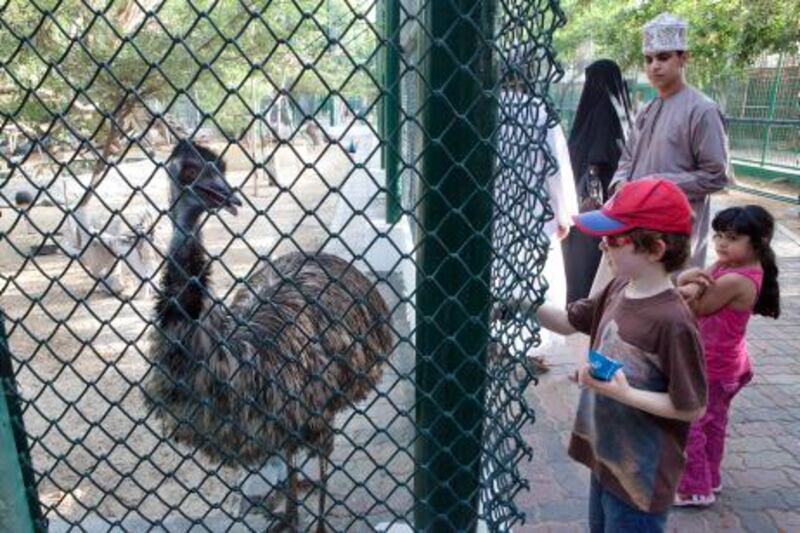DUBAI // A leopard growls angrily and chases away two of his companions, marking his territory inside a dingy, tiny cage at the Dubai Zoo.
The leopards, along with about 125 other species at the zoo, have been surviving in close quarters and harsh temperatures for more than four decades. But they may soon have more room to stretch their legs.
The municipality announced yesterday that it had commissioned a study to shift the two-hectare, government-run zoo from Jumeirah to new, world-class premises.
Within two months a consultancy and action team is to come up with the final concept, proposing a new location and required area, and recommending the allocation of space for each species according to international standards, said Hussain Lootah, the director general of the municipality.
When the Dubai Zoo was built in 1967 it had several dozen animals, but that number has greatly increased. Many animals have been donated privately or given to the zoo after Dubai Customs discovered them being smuggled into the UAE.
As a result, they are forced to share cages and jostle for room, and not always with their own kind.
The lack of space and poor living conditions at the public park have been under fire from visitors and activists for several years.
“The current zoo should be improved as it is very old and small after the huge development around it, and increasing number of animals and visitors,” Mr Lootah said.
The consultants had given the municipality the option of keeping animals in a “safari”, an open-air environment or enclosures.
“We are going to adopt the cages system, considering the area constraints in the emirate,” Mr Lootah said. “The cages will be arranged and distributed in accordance with each category and type of animals, birds and other species in a comfortable way.”
He said cages were common at zoos in most countries.
The park will have a team of specialists, veterinarians and curators, officials said.
Yesterday, activists were cautiously optimistic about the decision, as there have been several zoo relocation proposals in the past.
“I am sceptical whether or not the move will come through,” said Ashley Fruno, a Hong Kong activist from People for the Ethical Treatment of Animals (Peta).
Ms Fruno was among those who staged a protest in 2010 outside the zoo, dressed in monkey outfits and carrying signs that read, “Zoos: cruel animal prisons”.
“The Dubai Zoo is one of the worst zoos because of the sheer small size and because of the severe heat,” she said. “Each type of animal or species has to be assessed individually. Many require different cooling systems.”
Ms Fruno said she was disappointed authorities had decided to keep the animals locked up.
“A safari type of environment would be better so animals wouldn’t have been restrained,” she said.
Visitors at the park said the zoo management must emphasise the welfare of the animals.
“It is a real pity to see them like this,” said Yashwinder Pal, who was with his family at the zoo yesterday. “They look so unhappy and lonely. I have been on safaris and they are great. Here, I am very upset seeing them in congested conditions.”
Another visitor welcomed the planned venue change.
“We need a cleaner, more organised zoo,” said Naji Thbat, a Dubai resident. “Smaller countries have better zoos. We have to take care of the animals and ensure the environment is cleaner.”
Despite the space constraint, Dubai Zoo officials have maintained that the animals are treated with great care.
“A bigger place is better,” said an animal keeper at the zoo, who asked not to be identified. “But we take good care of the animals.
“In summer, we put ice and plenty of water in their cages. The gorillas, chimpanzees and snakes have air-conditioned enclosures, and some cages have fans.”






